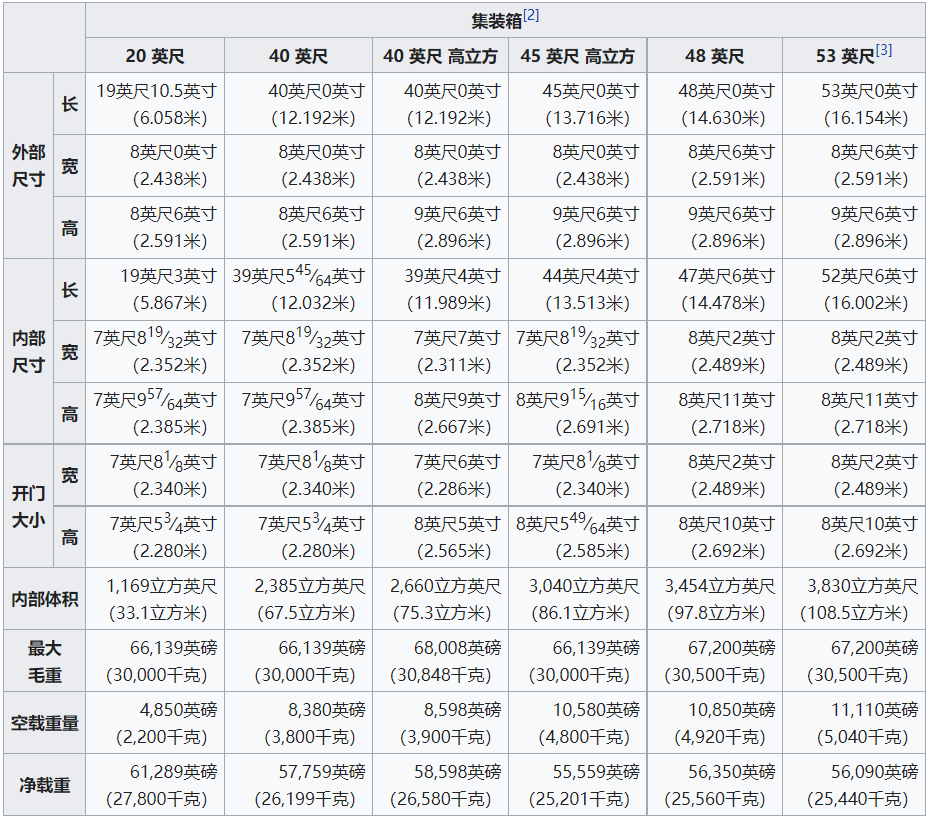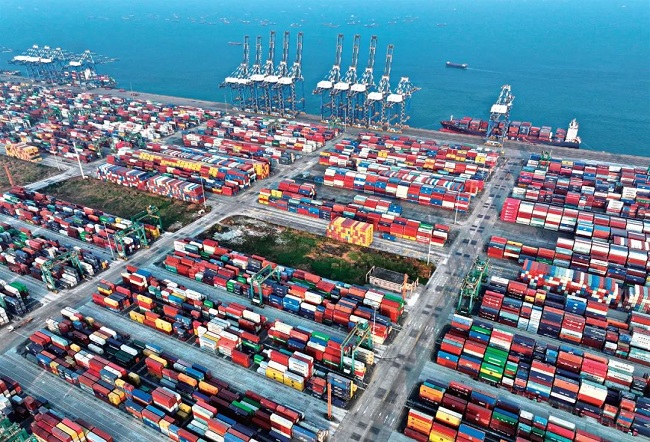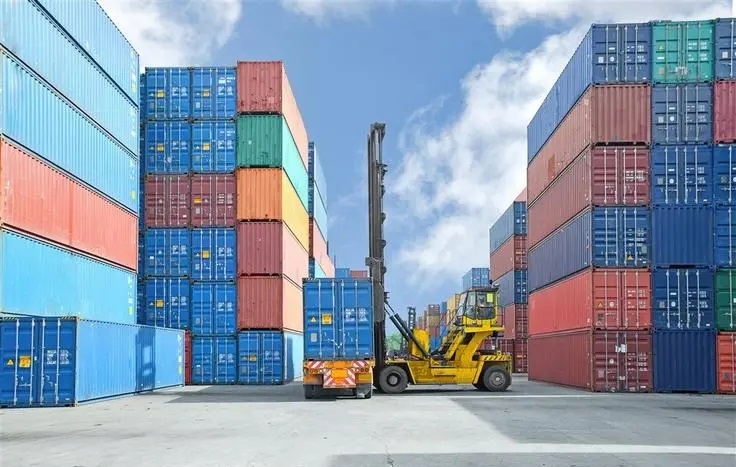Foreign trade people must see the container knowledge summary
 Feb 06, 2024|
Feb 06, 2024| View:124
View:1241. big cabinet, small cabinet, double back refers to?
(1) Large cabinets generally refer to 40-foot containers, usually referring to 40GP and 40HQ. 45-foot containers are generally considered special containers.
(2) Small cabinets generally refer to 20-foot containers, usually 20GP.
(3) Double back refers to two 20-foot cabinets. Like a trailer pulling two 20-foot containers at the same time; In port lifting, two 20-foot containers are lifted to the ship at once.
2. What does LCL mean? What about the full case?
(1) Less than Container Load (Less than Container Load) refers to the goods of multiple owners in a container, and small batches of goods that are less than a full box are LCL goods, which are operated according to LCL-LCL.
(2) Full Container Load (Full Container Load) refers to a container with only one owner or manufacturer's goods, which can be filled with one or more full containers of larger quantities of goods is full container cargo, and it is operated according to full container cargo (FCL-FCL).
3. What are the common specifications of containers?
(1)40 feet high cabinet (40HC) : 40 feet long, 9 feet 6 inches high; About 12.192 meters long, 2.9 meters high, 2.35 meters wide, generally loaded 68CBM or so.
(2)40 feet general cabinet (40GP) : 40 feet long, 8 feet 6 inches high; About 12.192 meters long, 2.6 meters high, 2.35 meters wide, generally loaded 58CBM or so.
(3)20 feet general cabinet (20GP) : 20 feet long, 8 feet 6 inches high; About 6.096 meters long, 2.6 meters high, 2.35 meters wide, the general loading is about 28CBM.
(4)45 feet high cabinet (45HC) : 45 feet long, 9 feet 6 inches high; About 13.716 meters long, 2.9 meters high, 2.35 meters wide, generally loaded 75CBM or so.

4. What is the difference between high cabinet and general cabinet?
The high cabinet is one foot taller than the general cabinet (one foot equals 30.44cm). No matter the high cabinet or the general cabinet, the length and width are the same.
5. box body weight refers to? What about the heavy boxes?
(1) Box weight: the weight of the box itself. The self-weight of 20GP is about 1.7 tons, and the self-weight of 40GP is about 3.4 tons.
(2) Heavy box: refers to the box loaded with goods, and empty box/box opposite.
6. empty box or box refers to?
A case that is not loaded is called an empty case. In South China, especially in Guangdong and Hong Kong, empty boxes are usually called auspicious boxes, because in Cantonese, empty and evil homonyms, unlucky, so South China is not called empty boxes, called auspicious boxes. The so-called Tiji also heavy, is to extract the empty container, pull to load, and then return the loaded heavy container.
7. what is a heavy box? What about the drop box?
(1) Back load box: it refers to the back load box at the station to the manufacturer or logistics warehouse to unload (generally refers to the import).
(2) Drop box: refers to the manufacturer or logistics warehouse after loading the goods to drop the heavy box back to the station (generally pointed out).
8. What does the back empty box mean? What is the empty box?
(1) Back empty box: refers to the station back empty box to the manufacturer or logistics warehouse loading (usually pointed to the port).
(2) Empty box: it refers to the unloading of goods at the factory or logistics warehouse to the terminal (usually refers to the import).

9. What box type does DC represent?
DC refers to Dry Container, 20GP, 40GP, 40HQ and other cabinets are dry containers.
10. What type of box does OT stand for?
OT is short for Open Top, refers to the open top cabinet, that is, there is no box top and only a tent on the top of the box cabinet.
11. Is the door half open?
A container with half the door open.
12. What is the bill of Lading number?
Usually it is the number that the forwarder gives you to carry the container, which may be the number of the owner's bill of lading (MBL), or the number of the freight forwarder's bill of lading (HBL), generally according to the ship name/voyage and bill of lading number to carry the container, that is, to pick up empty or heavy containers.
13. What is the case number/container number?
Refers to the number of the container, this number is unique in the world, consisting of four letters and seven numbers, of which the first three letters are the owner of the container (shipping company or leasing company) code, the fourth letter is U, the next six numbers are the serial number, the last number is the check code. The box number is usually asked to the driver, because the driver knows the box number when he goes to pick up the box, and the box number is used when customs declaration, document making and warehouse receipt entry.
14. What is the seal number?
Refers to the number of the seal that locks the container, the lead seal is generally provided by the shipping company, and it needs to be purchased, generally 50 yuan a.
15. What does export mean?
At the station back empty container to the manufacturer or logistics warehouse loading, and then declaration export.
16. What do imported goods mean?
After the import customs clearance, the heavy container is unloaded at the station to the manufacturer or the designated place.
17. What does empty sailing mean?
Refers to the car to the manufacturer or logistics warehouse, due to various reasons can not be loaded and the empty box is pulled back to the station.
18. What does dumping mean?
It refers to pulling boxes from one yard to another at a yard station, or not taking boxes in the order of top to bottom, but removing the boxes above and retrieving the boxes below. This is more likely to occur when the case number is specified or customs inspection is carried out.
19. What is the container terminal?
Usually refers to the place where boxes are stacked and managed on or near the dock, and the driver's back box is generally to the yard station. There is a corresponding thing called the terminal receipt, which is used to handle the transfer of containers between the terminal and the driver.

20. What does a bill of lading usually contain?
The contents of the bill of lading generally include the bill of lading number, ship name and voyage, box weight, cargo description, number of pieces, gross weight, volume, box number, issuer and signature.
21. What matters should be paid attention to when shipping?
Tell the owner whether to export or import, box type, box quantity, cargo weight, location, station and whether to agreement, to the manufacturer time, special requirements of the box.
22. What problems should you pay attention to when writing a car order?
To write as clearly as possible, because some drivers do not know the English alphabet, ship name, voyage, bill of lading number, station, arrival time, manufacturer's address, contact phone number, special requirements of the box and manufacturer's special requirements must be written clearly. The invoice title should be written clearly, don't let the driver open the wrong title.
In addition, the problems that should be paid attention to should be written on the above, such as some goods on the cabinet requirements are particularly strict, must be clear with the driver, so as to avoid the cost can not be clear with the driver.
23. What is the equipment delivery order?
When the export container is picked up, it is necessary to make a bill first, and then get a multi-copy of the "Equipment delivery order", and the driver uses this equipment delivery order to pick up the container, outbound, inbound, and return the box.
24. when will the export box station put the box?
Usually 10 o 'clock, but generally by 9 o 'clock, the place is empty, so the import must be back around 8 o 'clock, because the driver has to drop off the box first.
25. What does overload mean? What about overweight?
(1) overload: generally means that the tonnage of the goods loaded on the car exceeds the weight limit of the vehicle;
(2) Overweight: generally means that the tonnage of the loaded goods exceeds the weight limit of the container.
26. What does packing and unpacking mean?
(1)loading is carrying empty boxes to load.
(2)unloading is carrying a heavy container to the manufacturer.
What does it mean to go back again?
It means to pull the goods to pull the goods back, not empty return, not empty sailing.
28. What is the heavy charge?
The "heavy charge" at the high-speed Toll Gate refers to the toll collected according to the cargo weight and tonnage of the vehicle.
29. What is the damage charge?
Refers to the cost incurred when the imported cases are found to be damaged after unloading.
30. What is the washing fee?
Refers to the cost of cleaning the container when the case is found to be unclean.

 +86-21-61406313
+86-21-61406313 Login query
Login query
 Login query
Login query



